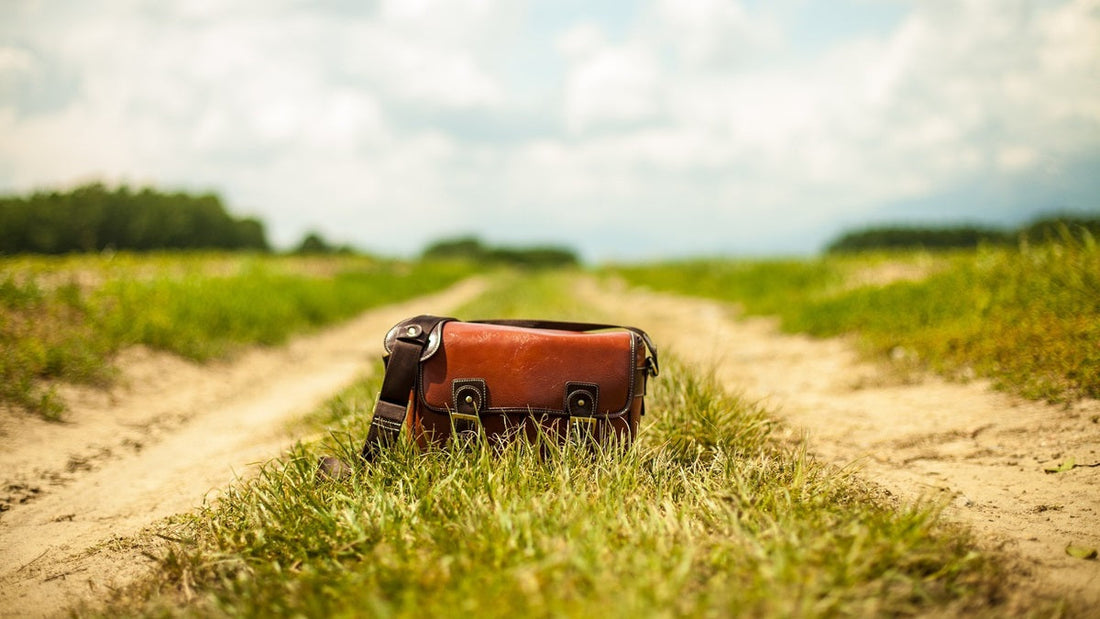
Sustainability in Leather: What It Really Means at LeatherLuxe
Facts, standards, and practical steps we take—plus how you can care for your bag to make it last for years.
Why leather can be sustainable
When people ask whether leather is “sustainable,” the most honest answer is: it depends on how it’s sourced, tanned, finished, and—crucially—how long it lasts in your wardrobe. Leather has three big advantages:
- It’s a durable, repairable material. Extending a product’s life dramatically reduces its total footprint. Independent research shows that adding just nine months of active use to a fashion item can cut carbon, water and waste footprints by roughly 20–30%—the simplest sustainability win there is.
- Most leather comes from by-products of the meat/dairy supply chain. Hides and skins are produced when animals are raised for food; using them diverts waste from landfill and creates high-value, long-lasting goods.
- Quality leather ages well. A well-made leather bag can be reconditioned, re-dyed, re-stitched and kept in use for many years, reducing replacement cycles.
How we source: audits, chemicals & traceability
Leather’s impact is driven by where it’s made and how it’s processed. That’s why we prioritise tanneries and suppliers that follow recognised third-party standards and robust chemical management.
Independent audits & environmental scoring
We look for tanneries that undergo independent audits (for example, the Leather Working Group’s audit standard), which evaluates water/energy use, wastewater treatment, air emissions, and traceability. These audits push continuous improvement and give us better visibility into upstream impacts.
Safer chemistry: ZDHC MRSL alignment
Hazardous chemicals should be eliminated at the manufacturing stage, not only restricted in finished goods. That’s the idea behind the ZDHC MRSL (Manufacturing Restricted Substances List), a unified list of chemicals banned from intentional use across leather and textiles. We favour partners who can demonstrate ZDHC alignment (e.g., via the ZDHC Gateway and audit evidence) and maintain strong wastewater controls.
Traceability & deforestation risk
Leather’s deforestation risk is linked to cattle ranching in certain regions. Global regulation is evolving (for example, the EU’s deforestation regulation will apply to cattle-linked products on a phased timeline). Our direction of travel is clear: strengthen material traceability, avoid risk regions, and work with suppliers who can evidence deforestation-free sourcing as rules tighten.
Tanning methods explained (veg-tan, chrome, chrome-free)
Tanning stabilises hides so they don’t degrade. There are several routes, each with trade-offs:
- Vegetable tanning uses plant-derived tannins (e.g., bark). It typically yields firmer leather with a natural patina and is favoured for certain goods. It can be slower and may use more water/time, but avoids chrome salts.
- Chrome tanning (using trivalent chromium, Cr(III)) is widely used because it’s efficient and produces soft, versatile leather. Managed properly, it’s safe; strict limits exist on hexavalent chromium (Cr(VI)) in leather that touches skin (≤ 3 mg/kg in the EU), with standardised ISO test methods to verify. Good tanneries recover chrome and treat effluent to protect workers and waterways.
- Chrome-free systems (e.g., aldehyde or titanium tanning) are growing, especially where brands prefer to avoid chrome entirely. The environmental profile still depends on energy, water, and chemical management—no method is perfect, but strong process control matters most.
Leather vs “vegan”/synthetic alternatives
Many “vegan leathers” are polyurethane (PU) or PVC-coated textiles. They avoid animal inputs, which some shoppers prefer; however, they’re plastic-based, can shed microfibres during wear and washing, and often don’t match leather’s tear/abrasion performance or lifespan. Independent lab work has shown traditional leather can outperform coated textiles on multiple technical metrics (like tear and abrasion resistance). Other studies show PU-coated fabrics can generate microplastics as they age.
We’re watching emerging bio-based materials (e.g., mycelium or fruit-waste composites). Some still rely on PU binders for durability; once fully plastic-free and robust enough for daily use, we’ll be excited to test them for our range. Our guiding principle is durability first—because the longest-lasting bag is usually the most sustainable choice.
LeatherLuxe commitments & what we’re working on
As an Australia-based brand, our sustainability approach focuses on longevity, safer chemistry, and traceable sourcing. Here’s how that translates into action:
- Prefer audited tanneries that score well on water, energy, wastewater and chemicals (e.g., Leather Working Group audits) and can share documentation.
- Chemical management aligned with ZDHC MRSL principles to eliminate hazardous substances in processing; we ask partners to evidence conformance via recognised portals where available.
- Deforestation-free risk management: we are building stronger upstream traceability and screening as regulations tighten globally.
- Design for longevity: classic silhouettes, robust hardware, reinforced seams, quality zippers—so each bag can live a long life with you.
- Repair & aftercare: we support local cobblers and bag repair specialists; ask us for guidance and parts where possible.
- Packaging: recycled/recyclable materials and right-sized boxes to minimise waste.

Care & repair: the biggest sustainability win
With simple care, your LeatherLuxe bag can look great for years. Try these pro tips:
- Condition twice a year with a pH-balanced leather conditioner to keep fibres supple and prevent cracking.
- Water & stain protection: use a leather-safe protector (avoid aerosol over-spray on hardware). Re-apply every few months if used daily.
- Rotate & rest: give leather a day off between heavy uses; store in a breathable dust bag (never plastic) and stuff with tissue to maintain shape.
- Spot clean with a barely damp cloth; avoid harsh cleaners and baby wipes (they can strip finishes).
- Repair early: replace worn edge paint, re-stitch loose threads, and swap zips or sliders before damage spreads.
If you need help, message us—we’re happy to recommend trusted repair partners near you.
FAQs
Is leather biodegradable?
Untreated leather is a protein-based material and can biodegrade under the right conditions. Finished leather degrades more slowly (and chrome-tanned leather more slowly still), but it does not shed plastic microfibres like synthetic (PU/PVC) alternatives do during wear and washing.
Is chrome in leather safe?
The form used in tanning is trivalent chromium (Cr(III)). Strict market rules limit hexavalent chromium (Cr(VI)) in finished leather that touches skin, and accredited labs test to ISO standards. Responsible tanneries recover chrome and treat effluent.
What about deforestation?
We are strengthening traceability and supplier screening as global rules evolve. We work to avoid risk regions and increase documentation that upstream sources are free from deforestation.
